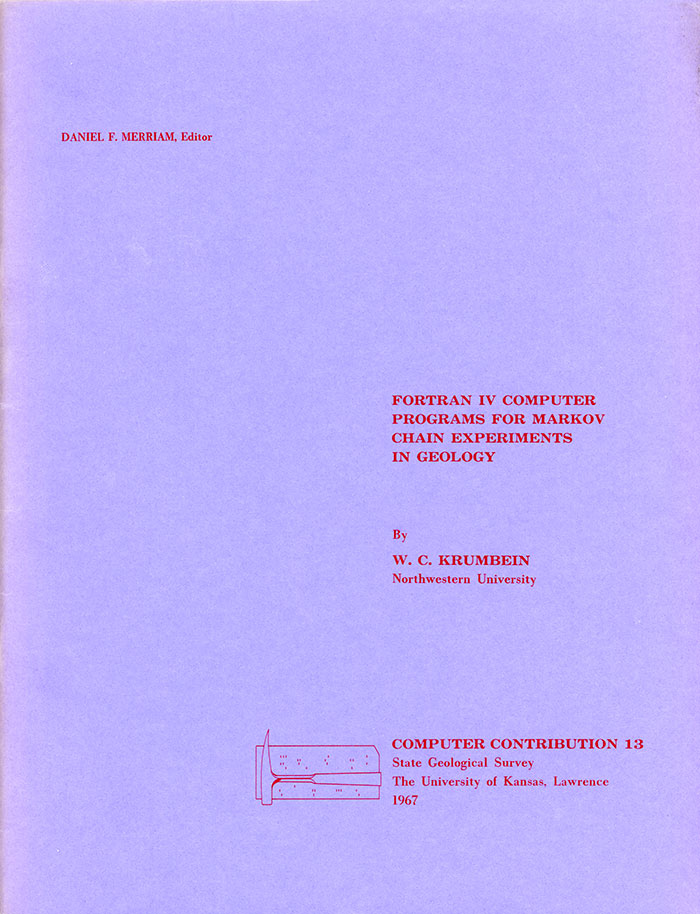
Kansas Geological Survey, Computer Contributions 13, originally published in 1967
Northwestern University

Originally published in 1967 as Kansas Geological Survey Computer Contributions 13.
Probabilistic models provide a mechanism for computer simulation of a wide variety of geological processes. This paper emphasizes first-order Markov chains because of their intuitive appeal and rapidly growing applications. Examples are based on stratigraphic analysis, but other uses of the model are discussed briefly.
First-order Markov chains are among the simplest stochastic process models, and they afford a point of entry into a large class of probabilistic mechanisms that can be useful in geology. This paper is designed to stimulate experimentation with these models, in part by providing relatively simple computer programs that cover four aspects of such analysis. These programs, listed in the Appendix, include one for testing the presence of a Markov property, a second for raising the transition probability matrix to successive powers in order to estimate the equilibrium states (i.e., the fixed probability vector) of a system, and a third for using the transition matrix in simulation studies. A fourth program for simulating independent-events processes (non-Markovian) can be used with the fixed probability vector of a Markov chain to obtain some interesting comparisons among different ways of structuring a sequence of observations or events.
The expanding literature on stochastic models in geology demonstrates growing interest in application of probabilistic mechanisms to studies in stratigraphy, sedimentation, paleontology, geomorphology, petrology, and other aspects of earth science. These mechanisms may be incorporated into conceptual geological models in various ways, and the present tendency in large part is to invoke Markov processes, implemented by transition probability matrices or expressed as random walks.
Interest in these models, especially among computer-oriented graduate students, is such that it seems desirable to encourage experimental modeling of a variety of geological processes, both to increase familiarity with the Markov process, and as an introduction to other classes of stochastic process models.
Four computer programs in current use at Northwestern University are used to illustrate experiments that have been performed. Although it is necessary in discussing these experiments to stress methodology, the intent here is also to raise questions regarding geological implications of structuring observed data as Markov chains. An important objective of this paper is to emphasize the point that if a process has Markov properties, this mainly means that preceding events have some influence on succeeding events. Such knowledge is important in explaining statistical "driving forces" that control simulation output, and with further analysis this knowledge can lead to better understanding of the real-world geological process that gives rise to the observed phenomenon.
I am indebted to numerous statisticians and geologists for aid in understanding Markov processes and for various stratigraphic, sedimentary, and other examples. W. R. James kindly permitted adaptation of his program for estimating the fixed probability vector, which is listed as STOCHEX in the Appendix. T. A. Jones was helpful in developing the Markov test which is listed as TESTMARK in the Appendix. Mrs. Betty Benson of the Vogelback Computing Center at Northwestern University wrote the final versions of all programs, and adapted MARCHAIN (for Markov transitions) to NO MEM for independent-events trials with fixed probability vectors.
Read the PDF version (8.2 MB)
Kansas Geological Survey
Placed on web Aug. 28, 2019; originally published 1967.
Comments to webadmin@kgs.ku.edu
The URL for this page is http://www.kgs.ku.edu/Publications/Bulletins/CC/13/index.html